- Home
- V. S. Naipaul
The Writer and the World
The Writer and the World Read online
Acclaim for V. S. Naipaul’s
THE WRITER AND THE WORLD
“A welcome and worthy volume…. Only Naipaul can take a dim view of so much and so many, yet keep that dimness fantastically illuminated…. His prose is often simultaneously a blunt instrument and a surgical one, equally freighted with broad dismissive statements and blood-lettingly dissective insight.”
—San Francisco Chronicle
“Perceptive … inspired, provocative…. Naipaul has succeeded in richly articulating a writer’s engagement with and exploration of the world.”
—The San Diego Union-Tribune
“A profound, bracing meditation on the legacy of the colonial world…. His writing [offers] the world through eyes possessed of a noble clarity.”
—Pittsburgh Post-Gazette
“A worthwhile addition to anyone’s library…. Thought-provoking…. The quality and credibility of Naipaul’s words become apparent when you find yourself savoring [his] descriptions…. Once finished with the collection, the reader will never see the world through the same eyes again.”
—Fort Worth Star-Telegram
“Witheringly astute…. One of our finest living writers…. Naipaul’s is a crystalline, no-nonsense style…. He gives you the real world.”
—The Weekly Standard
“Naipaul is essential reading today for anyone interested in a dissection of the universal tension that exists now between the East and the West…. He’s a master stylist and technician, a delicate arranger of material and narratives…. He handles every one of his themes intelligently and deftly…. He brings his intensity and interest to bear equally on all of his subjects…. His scholarship is exhaustive, his intuition trustworthy, and his scrutiny is unwavering.”
—The Oregonian
“Because his intelligence is his genius, to watch Naipaul think about what he is looking at (no matter what the vantage point) is to learn how exceptional writing is done. The rage is the drive, the mind is the talent, but the sentences he taught himself to write, they are the magic.”
—Los Angeles Times Book Review
“Wonderfully insightful…. Few writers are as qualified for the present moment, and few writers are as needed.”
—The Orlando Sentinel
“Naipaul forces the traveler to think…. [He is] ever curious, ever exact in his observations.”
—Austin American-Statesman
“Possessed of a vigorous, casually elegant prose style and infinite curiosity, [Naipaul] has managed to elude every possible ideological niche while producing an extraordinary body of work…. His is a many-angled way of seeing the world; he speaks to us in a voice of necessary lament and, unlike so many who set themselves up as secular prophets, he is in no way inauthentic.”
—The New York Times Book Review
“Splendid…. Elegant and understated…. Naipaul is insatiable in his pursuit of facts and brilliant in his analysis of them.”
—The Star-Ledger
“Naipaul’s essays … depict a chaotic world, torn by ethnic, religious and cultural antagonisms, but they also discover the humanity that unites us, and thereby provide the kind of reassurance that perhaps only literature affords.”
—San Jose Mercury News
V. S. Naipaul
THE WRITER
AND THE WORLD
V. S. Naipaul was born in Trinidad in 1932. He went to England on a scholarship in 1950. After four years at Oxford he began to write, and since then he has followed no other profession. He is the author of more than twenty-five books of fiction and nonfiction and the recipient of numerous honors, including the Nobel Prize in 2001, the Booker Prize in 1971, and a knighthood for services to literature in 1990. He lives in Wiltshire, England.
ALSO BY V. S. NAIPAUL
NONFICTION
Literary Occasions
Between Father and Son: Family Letters
Beyond Belief: Islamic Excursions Among the Converted Peoples
India: A Million Mutinies Now
A Turn in the South
Finding the Center
Among the Believers
The Return of Eva Perón (with The Killings in Trinidad)
India: A Wounded Civilization
The Overcrowded Barracoon
The Loss of El Dorado
An Area of Darkness
The Middle Passage
FICTION
Half a Life
A Way in the World
The Enigma of Arrival
A Bend in the River
Guerrillas
In a Free State
A Flag on the Island*
The Mimic Men
Mr. Stone and the Knights Companion*
A House for Mr. Biswas
The Suffrage of Elvira*
Miguel Street
The Mystic Masseur
* Published in an omnibus edition entitled The Nightwatchman’s Occurrence Book
Contents
Introduction
INDIA
In the Middle of the Journey
Jamshed into Jimmy
A Second Visit
The Election in Ajmer
AFRICA AND THE DIASPORA
Papa and the Power Set
The Shipwrecked Six Thousand
The Ultimate Colony
The Overcrowded Barracoon
Power?
Michael X and the Black Power Killings in Trinidad: Peace and Power
A New King for the Congo: Mobutu and the Nihilism of Africa
The Crocodiles of Yamoussoukro
AMERICAN OCCASIONS
Columbus and Crusoe
Jacques Soustelle and the Decline of the West
New York with Norman Mailer
Steinbeck in Monterey
Argentina and the Ghost of Eva Perón, 1972–1991
The Air-Conditioned Bubble: The Republicans in Dallas
Heavy Manners in Grenada
A Handful of Dust: Cheddi Jagan and the Revolution in Guyana
Postscript: Our Universal Civilization
Introduction
BETWEEN 1929 and 1935, the English novelist Evelyn Waugh published no less than four books about his journeys to Africa, South America and the Mediterranean. “I was simply a young man, typical of my age,” Waugh later explained. The travel to such far-off exotic places as British Guyana and Belgian Congo was an “initiation to manhood,” as much for Waugh as for his friends, Graham Greene, who went to Liberia, and Robert Byron, who travelled to Persia and Afghanistan.
When in 1945, Waugh made a selection from his four travel books, his mood was elegiac. The Second World War had just ended; the long day of the Empire, when the going was, in Waugh’s own words, good, seemed about to wane. As Waugh saw it, “All that seeming-solid, patiently built, gorgeously ornamented structure of Western life” had melted, leaving “only a puddle of mud.” The world that he had once felt to be “wide open before us” was now full of “displaced persons”; there was little room in it for travel books, or tourists.
There is something melodramatic you now sense about such pessimism, in which the clichés of the time—the decline of the West, the rise of barbarism—seem to have got mixed up with Waugh’s own disdain for the vulgar present and a longing for the Georgian certainties of his hectic youth. It makes a poor guide to the history of the last half century. For while it is true that the European empires created in the nineteenth and early twentieth centuries have disappeared, the power and the wealth of the West that made the world seem wide open to Waugh and other English travellers has increased in a way few people could have imagined in the 1940s.
Indeed, the gap between Europe and the parts of the world it once directly ruled has widened even furth
er. Modernity, an accomplished fact in the West, remains a fraught, repeatedly frustrated aspiration in other parts of the world. One consequence of this has been the arrival in the revitalized cities of Europe and North America of hundreds of thousands of immigrants: the once-picturesque natives of Africa, Asia and South America who have had to flee the chaos and diminishing possibilities of their half-modern societies.
Half a century later, these “displaced persons,” who Evelyn Waugh feared would break into and upset the old world order, contribute, with increasing confidence, to the cosmopolitan life and culture of cities like London and New York. In England itself, there is an ever-growing literature that describes their varied lives: the experiences of colonial subjects who have had to remake themselves out of a bewilderingly diverse material for a new life in the old imperial centre. Much publicity and excitement currently attends this literature. Various academic categories—Commonwealth, Multicultural, Diasporic, Indo-Anglian, Caribbean, African, etc.—have proliferated around it, encouraging among individual writers a correct political passion that often compensates for the maturity and skill only a few of them have fitfully achieved.
But even this young literature, still only developing its own traditions, would have been hard to imagine in 1945, when the prospect for Britain as well as its new immigrants looked bleak. This is why it is astonishing to realize that less than five years after Waugh’s grim vision of a post-war world, V. S. Naipaul travelled to England as a scholarship student from the tiny Caribbean island of Trinidad; and by 1957, decades before our glamorous multicultural times, had already begun, with scarcely an audience in sight, in what now looks like a dispiriting vacuum, one of the most brilliant—and by far the unlikeliest—literary careers of the last hundred years.
IN ENGLAND, Naipaul was doubly, or trebly, displaced. The dereliction of late-nineteenth-century North India had forced his Brahmin grandparents to make the long journey by sea to the plantation colony of Trinidad, where they worked as indentured labourers. In 1932, when Naipaul was born, his father, Seepersad, had barely begun to lift himself out of his family’s near-destitute circumstances in the Trinidad countryside.
There was little place in Trinidad for people in Naipaul’s position, to whom the larger, more complex societies elsewhere alone promised an escape from a life of squalor and deprivation. And then, as if life in a foreign land as a young man a long way from home wasn’t arduous enough, the promise of escape, in Naipaul’s case, had become tied to an absurdly high literary ambition.
As a badly paid journalist for the Trinidad Guardian, Seepersad had written some short stories about the village life of his childhood. His son inherited his quite miraculous—given the general background of peasant poverty—literary aspiration, and took it with him to England where it became confused, during a time of poverty and insecurity, with a longing for metropolitan glamour and serenity: with the desire to be a writer like Evelyn Waugh, “aloof everywhere, unsurprised, immensely knowing.”
Six long years of struggle and futility followed before Naipaul discovered, in such books as Miguel Street (1959), The Mystic Masseur (1957), The Suffrage of Elvira (1958) and A House for Mr. Biswas (1961), his true subject. It was a discovery that was essentially of his own self: of the colonial who had grown up on a tiny, backward island in the Caribbean, amidst an insular Indian community, and then with the racially mixed population of Port of Spain: the man who had no clear past or affiliations, and who had to figure out the world he had been thrown into while attempting to perceive the many strands that made up his self.
WHEN IN 1960, WITH THREE books behind him, Naipaul travelled to the British, Dutch and French colonies of Jamaica, Trinidad, Guyana, Surinam and Martinique, he was only beginning to comprehend the great movements of history that had produced and marked him: the Muslim invasions of India, the rise of the European empires, the colonization of the Caribbean islands by Spain and Britain, the setting up of the sugar plantations, the transport of cheap slave labour from Africa and Asia, the unprecedented mixing of Indian, African and Chinese populations on a few small dependencies of the British empire.
In the book Naipaul wrote subsequently, The Middle Passage (1962), his first work of nonfiction, you can see his curiosity as well as knowledge shaped by what John Updike called a “pained partial identification” with his subjects. Some of the colonies Naipaul visited were then readying themselves, after the centuries of exploitation and misery, for self-rule. Naipaul found himself a “colonial among colonials”: among a people isolated from, but also dependent upon, the outside world, eagerly embracing the “new slavery of tourism,” or competing, as in the case of Indian and Black Trinidadians, for the favours of “an unacknowledged white audience.”
An intense personal fear of “the void of non-achievement” seemed to lie behind Naipaul’s acute analyses in The Middle Passage of the colonial habits of dependence and mimicry. A greater precision marks the essays Naipaul wrote after travelling in 1969 through British Honduras, St. Kitts, Anguilla and Trinidad. The Caribbean was then awash with the ideologies, imported from the United States, of Black Power and Pan-Africanism. With characteristic nuance, Naipaul admitted the political potential of black identity in the United States. But he saw it in the Caribbean as a “sentimental trap, obscuring the issues,” which were related as much to “the smallness of the islands and the absence of resources” as to the past of “slavery and colonial neglect.”
The problems in the Caribbean were of “manufactured societies, labour camps” that had been dependent for a very long time on empire for “law, language, institutions, culture, even officials.” “How, without empire, do such societies govern themselves?” There were no easy answers. In Naipaul’s bleakly realistic—but also deeply felt and prophetic—view, a “renewed or continuing exploitation” awaited the small islands which were “dangerous only to themselves” with their eruptions of frustration and rage. For—and this was to be proved true again and again over the next decades—“they will always be subject to an external police. United States helicopters will be there, to take away United States citizens, tourists; the British High Commissions will lay on airlifts for their citizens.”
Four years later, Naipaul would write about Michael X and how the torment and despair concealed by the slogans of Black Power—something middle-class whites in “provincial, rich and secure” England co-opted into the fashionable causes of the sixties, and then abandoned just as quickly—had degenerated into lunacy and murder in Trinidad. In 1984, Naipaul would witness in Grenada the confused aftermath of another pseudo-revolution: a small island unable yet again to deal with its free state, and overrun by Americans, “serving their own cause.”
But already, in 1969, he has a sharp, if melancholy, sense of the way real—as opposed to rhetorical—power works in the world. The same year Naipaul had published The Loss of El Dorado, a narrative about Trinidad that describes several crucial events between Walter Raleigh’s raid on the island in the sixteenth century to its virtual abandonment by the British in the early nineteenth century. By 1969, Naipaul had also spent much time in India and some newly independent parts of Africa. The intense, ironic observer you meet in the essays is as alert to the self-deceptions being bred by new ruling elites in post-colonial societies as he was to the older cruelties and delusions of the Spanish and British empires in Trinidad.
OF NAIPAUL’S travels in the 1960s, the visits to India seem to have yielded the greatest number of intellectual and personal discoveries. India was the land of his ancestors, about which Naipaul had inherited a noble idea—an idea that long separation rather than first-hand experience had strengthened among the Indian community in Trinidad, and, supported by the prestigious names of Gandhi and Nehru, had formed part of Naipaul’s identity in England.
But the India Naipaul travelled to, in the last days of Nehru, was a country made complacent and sanctimonious by the victories of the freedom movement; and while expecting to find a vibrant post-colonial count
ry with many human possibilities, Naipaul came across wretchedness of the sort his ancestors had escaped from almost a century ago.
Instead of metropolitan confidence and generosity, he met “colonial self-distrust” and “a spirit of plunder.” In Calcutta, once the capital of India’s first modern culture, Naipaul found a decaying city, full of the freak products of a “violent” encounter between the East and the West: an Indian-built extravagantly European marble palace, Lord Curzon’s “studiedly derivative” Victoria Memorial, golf-playing corporate executives with nicknames like Jimmy and Bunty. Elsewhere, Gandhi was being imitated, in a ritualistic way: a further disaster in a country that was still trapped in the quasi-religious self-righteous passivity that Gandhi had turned into a partially effective anti-colonial program. Naipaul’s later visits to India—in 1967, against a background of serious political and economic crisis, and then in 1971, to cover a parliamentary election in Rajasthan—only confirmed his perception of a “profoundly dependent” country ruled by “slogans, gestures and potent names,” still in thrall to its ancient decaying civilization, and far from the inevitable and many-sided reckoning with the modern world that Naipaul later described in India: A Million Mutinies Now (1990).
IN 1969, NAIPAUL also travelled to the United States; and although these essays covering Norman Mailer’s mayoral campaign in New York City and John Steinbeck’s Cannery Row in California describe a society much more organized and secure than the one found in the Caribbean and India, the writer’s restless moral intelligence continues to insist on standards of clarity and rationality.
The Monterey peninsula in California, just a few miles away from the “endless lettuce level fields of Salinas, the bitter landscape of stoop-labour,” has been turned into “fairyland”: a fantasy in which Naipaul sees Steinbeck, despite his social concerns, as having played a part. The existentialist pose of Mailer and the “glamour and ambiguity” of his campaign are not very different from the “equivocations of Black Power” that offer “something to everybody”: in both cases drama and style become a substitute for practical politics.

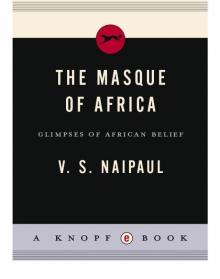 The Masque of Africa: Glimpses of African Belief
The Masque of Africa: Glimpses of African Belief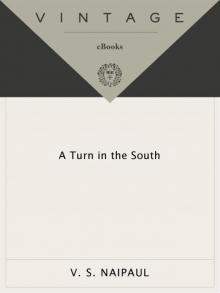 A Turn in the South
A Turn in the South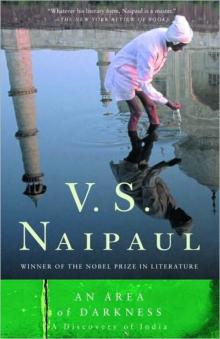 An Area of Darkness
An Area of Darkness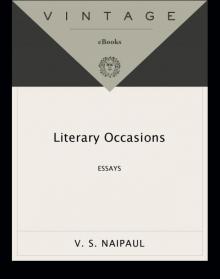 Literary Occasions: Essays
Literary Occasions: Essays A Way in the World
A Way in the World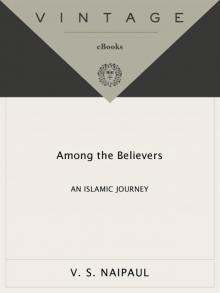 Among the Believers: An Islamic Journey
Among the Believers: An Islamic Journey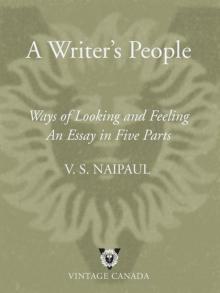 A Writer's People: Ways of Looking and Feeling
A Writer's People: Ways of Looking and Feeling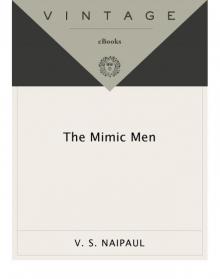 The Mimic Men: A Novel
The Mimic Men: A Novel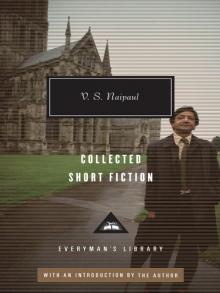 Collected Short Fiction
Collected Short Fiction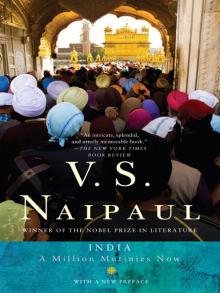 India: A Million Mutinies Now
India: A Million Mutinies Now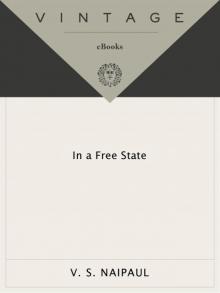 In a Free State
In a Free State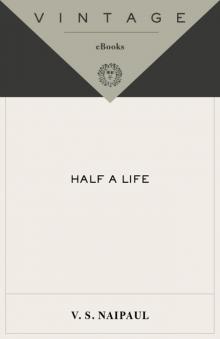 Half a Life
Half a Life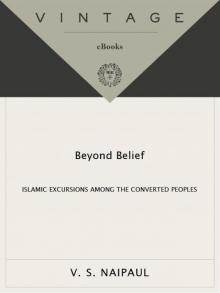 Beyond Belief: Islamic Excursions Among the Converted Peoples
Beyond Belief: Islamic Excursions Among the Converted Peoples Guerrillas
Guerrillas A House for Mr. Biswas
A House for Mr. Biswas The Writer and the World: Essays
The Writer and the World: Essays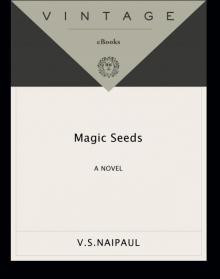 Magic Seeds
Magic Seeds The Mystic Masseur
The Mystic Masseur Miguel Street
Miguel Street The Return of Eva Perón, With the Killings in Trinidad
The Return of Eva Perón, With the Killings in Trinidad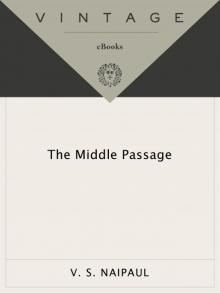 The Middle Passage
The Middle Passage A Bend in the River
A Bend in the River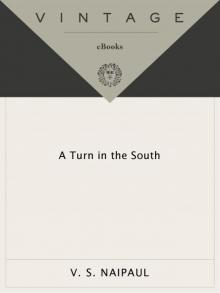 A Turn in the South (Vintage International)
A Turn in the South (Vintage International)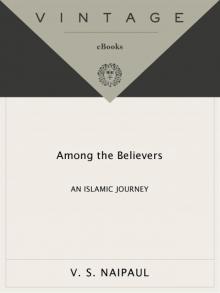 Among the Believers
Among the Believers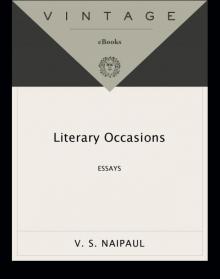 Literary Occasions
Literary Occasions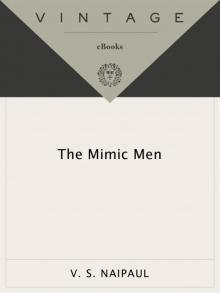 The Mimic Men
The Mimic Men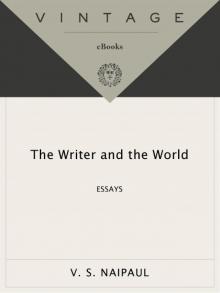 The Writer and the World
The Writer and the World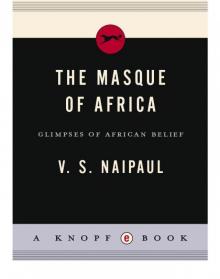 The Masque of Africa
The Masque of Africa